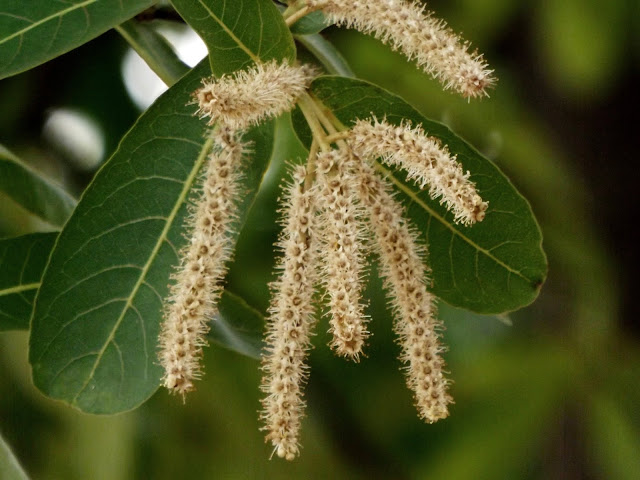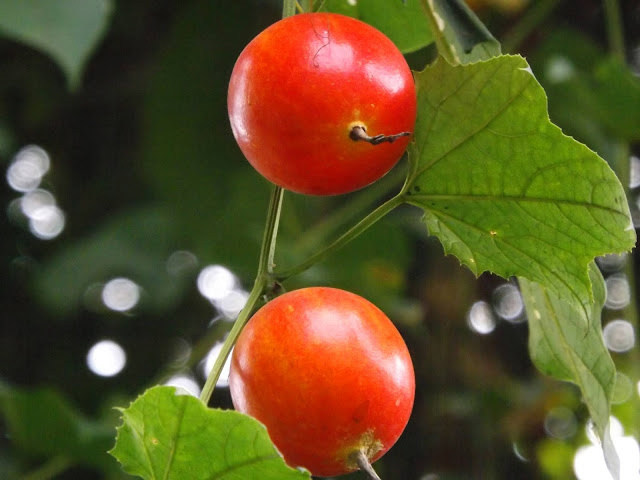Arjun or Arjuna, Terminalia arjuna
Arjun or Arjuna (Terminalia arjuna, family: Combretaceae) is a medium or large-sized deciduous tree, of about 20-25 m height, with numerous drooping branches and large canopy. Bark is thick, whitish grey, smooth and loose. Wood is hard. It has long been used as one of the most popular medicinal plants in the Indian subcontinent. The tree is native to Bangladesh as well as Indian subcontinent. It is also found in some countries of South and Southeast Asia.
Common names: Arjuna, Arjun tree.
Leaves are simple, green, oblong and surprisingly conic, 10-20 cm long and 8-10 cm wide, sessile or less petioled, opposite, tip blunted.
Fruit is somewhat 5-angular and winged, woody, 2.5-3.5 cm long. Propagation is caused by seeds.
Propagation is caused by seeds. Local herbalists and enthusiasts do not allow the trunk of this tree to remain intact in order to get its bark filled with medicinal properties. Within a few days, however, it
healed its wound by creating some wrinkles in the trunk.
Its bark extract is used for cardiac diseases, as it contains tannin. Leaves are used for urinary disease, wound, dysentery, fever and pain. According to herbalists, drinking the juice of its bark with sugar and milk every morning cures heart disease. Decoction of the bark is very beneficial in diarrhea and hemorrhoids. The Vedic name of the tree is Kakubha. It is mentioned in ancient Charaka and Sushruta texts.
Synonyms: Pentaptera angustifolia, Pentaptera arjuna, Pentaptera glabra, Pentaptera obovata.








Comments
Post a Comment